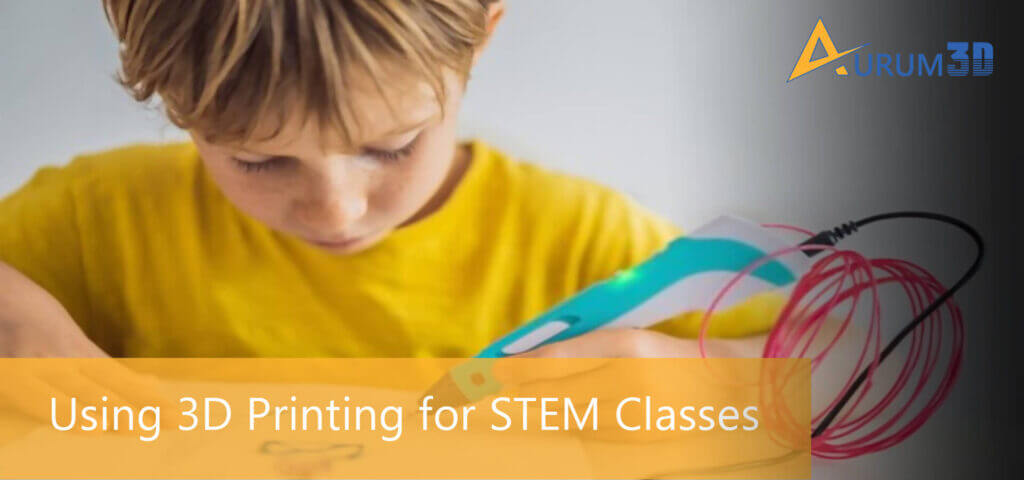In the twenty-first century, students cannot become successful professionals simply by acquiring knowledge on various topics. In addition to gaining rich knowledge, they have to focus on honing essential skills like collaboration, communication, innovation, and critical thinking. Unlike traditional education, STEM education helps students to acquire and hone soft skills by combining multiple fields of science, technology, engineering, and mathematics (STEM).
According to LiveScience.com,
“STEM is a curriculum based on the idea of educating students in four specific disciplines — science, technology, engineering, and mathematics — in an interdisciplinary and applied approach. Rather than teach the four disciplines as separate and discrete subjects, STEM integrates them into a cohesive learning paradigm based on real-world applications.”
3D printing or additive manufacturing is one of the disruptive technologies that help educators to deliver STEM learning more efficiently and innovatively. In addition to keeping them engaged and motivated in STEM classes, 3D printing technologies help students to unleash their creativity and boost their problem-solving skills. While learning new concepts, students can use 3D printers to visualize various abstract concepts.
At the same time, teachers can leverage 3D printing technologies to create new learning opportunities in STEM classes. They can use 3D printers to encourage students to print a variety of three-dimensional objects while learning concepts. That is why; many educational institutions transform STEM education by making 3D printers accessible to teachers and students. The educational institutes can leverage the access to use 3D printing for STEM classes in many innovative ways.
7 Ways Educators Use 3D Printing to Deliver and Enhance STEM Education
1) Visualizing Scientific Concepts and Principles
Despite the huge demand for STEM skills, many students leave STEM training due to various reasons, including negative experience in introductory courses. Teachers can keep students interested and engaged in introductory STEM classes only by explaining scientific principles and theoretical concepts clearly.
3D printing technologies enable teachers to keep students engaged by visualizing various scientific concepts. For instance, while teaching physics a teacher can create physical models to explain theoretical concepts more lucidly. Likewise, she can 3D-print geometric shapes and atoms while explaining other STEM concepts.
2) Encouraging Students to Design Their Own Mechanisms
In most STEM classrooms, teachers explain and demonstrate various machines conventionally. When a teacher can access a 3D printer, she can explain levers, pulleys, and other mechanisms in a different and innovative way.
Students can demonstrate various mechanisms in real-time by allowing students to 3D-print the parts and components. Students can 3D-print existing and new mechanisms based on digital files shared by the teacher. The 3D printer will further encourage them to design their own mechanisms and finetune existing mechanisms.
3) Facilitating Project-Based Learning
Engineers design and develop products or solutions based on varying client needs. Hence, they need to focus on modeling as an integral part of the engineering process. The outcome of STEM learning programs depends on developing and improving the modeling ability of students. Teachers must boost the modeling ability of students by promoting project-based learning activities.
3D printing technologies enable students to create models based on a variety of information and instructions. They can further express their creative ideas through frequent testing, correction, and improvements. The ability to create and finetune models will prepare students to optimize the engineering design process in real-time work environments.
4) Acquiring the Art of Failure
There are many innovators who developed and launched outstanding products only after mastering the art of failure. They experimented with multiple versions of the product to evaluate and finetune their ideas, designs, and concepts. As mentioned earlier, 3D printers enable students to experiment with innovative ideas and improve existing ideas in STEM classrooms.
Every student can identify the flaws or shortcomings in a design by 3D-printing multiple versions of the model or prototype. Also, she can evaluate the 3D-printed model to identify the changes and improvements required to design the perfect product. The evaluations and improvements will foster innovation in the long run by helping students master the art of failure.
5) Reducing Gender Gap in STEM Fields
According to a report released by UNESCO,
“Only 35% of STEM students in higher education globally are women, and differences are observed within STEM disciplines.”
In addition to delivering STEM education more efficiently, educational institutions must reduce the gender gap by keeping female students engaged and motivated.
3D printing technologies enable both male and female students to create physical objects by conceptualizing their innovative ideas. Also, educators can keep female students engaged and motivated by visualizing scientific concepts. The motivation will encourage many female students to enter STEM fields for study and career purposes.
6) Switching from STEM to STEAM Education
Many educational institutions these days switch from STEM to STEAM education to make students solve problems using both hard and soft skills by learning arts. They enhance the career prospects of students by learning language art, visual arts, dance, music, drama, history, and humanities.
3D printing technologies help educators to add artistic dimensions to STEM concepts. Like visualizing concepts, teachers can use 3D printers to promote critical thinking and artistic hobbies to prepare students to transform and optimize their crafts. For instance, students understand important attributes and natural elements by 3D printing items of historical and cultural significance.
7) Mastering One of the Futuristic Tech Skills
While attending STEM classes, students can easily enhance their career prospects by learning a disruptive technology like 3D printing. In addition to using 3D printers to visualize scientific concepts, teachers can teach students how to create models and prototypes using various 3D printing technologies.
The 3D printing training will prepare students to create a three-dimensional representation of an object digitally using specialized CAD/CAM software. Also, the students can use the appropriate 3D printer to convert the 3D models into solid objects. The students can note and follow the steps to 3D print a variety of items using their creativity and imagination.
3D printing technologies prepare students to solve real-world problems and enhance career prospects by honing their STEM skills. That is why; many educational institutions have already started modernizing and transforming STEM classes by leveraging 3D printing technologies. Hence, access to 3D printers will create opportunities for teachers and students to enhance STEM learning by creating new use cases regularly.
About Aurum3D
At Aurum3D, our 3D Printing solution experts have been working with various Educational Institutes for custom 3D printing services as per their needs. We also supply 3D Printers as per their specific needs and help set up 3D Printing Labs in their premises. Please feel free to contact us for your needs, our solution experts will revert back within 48 business hours.

